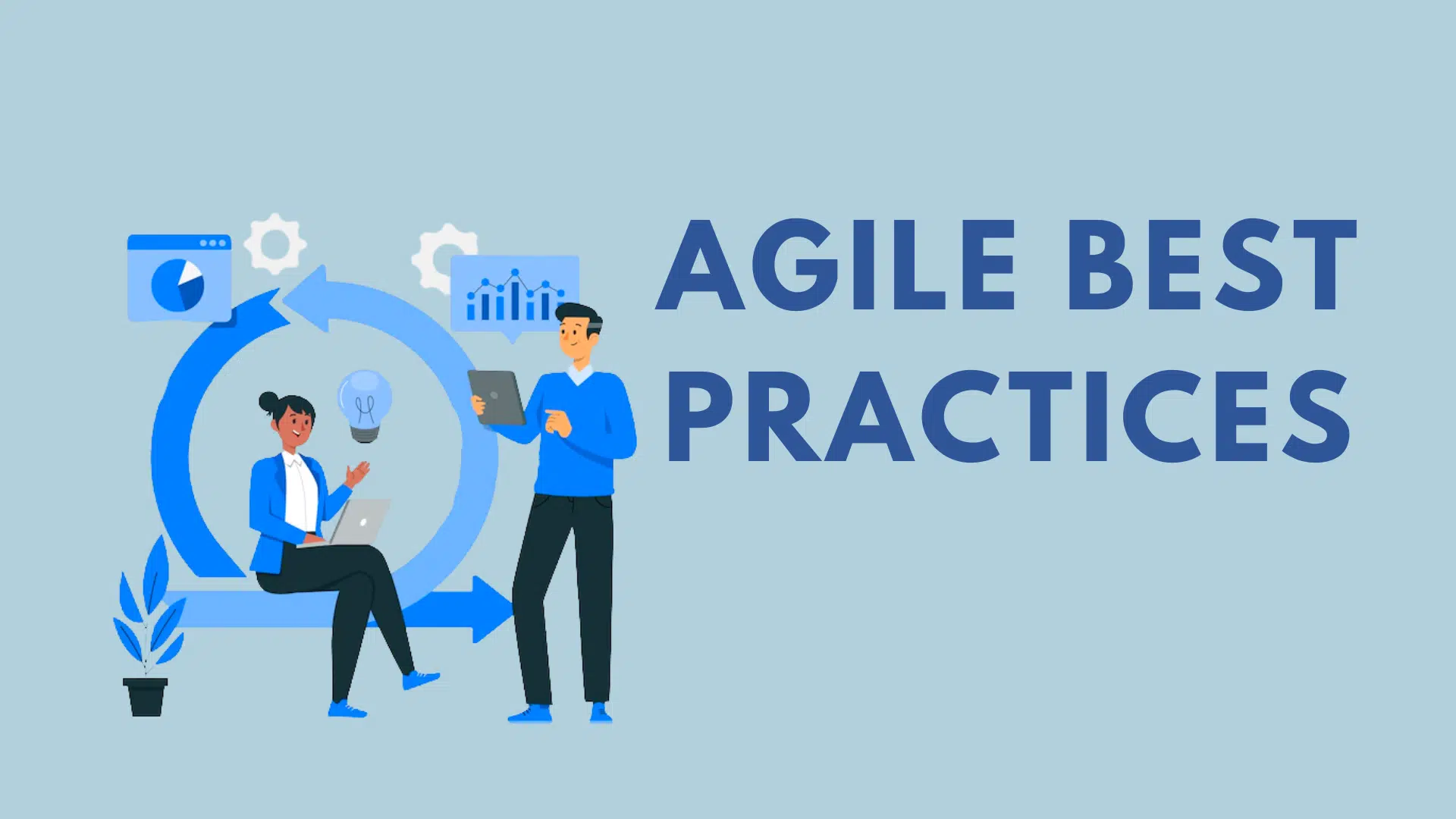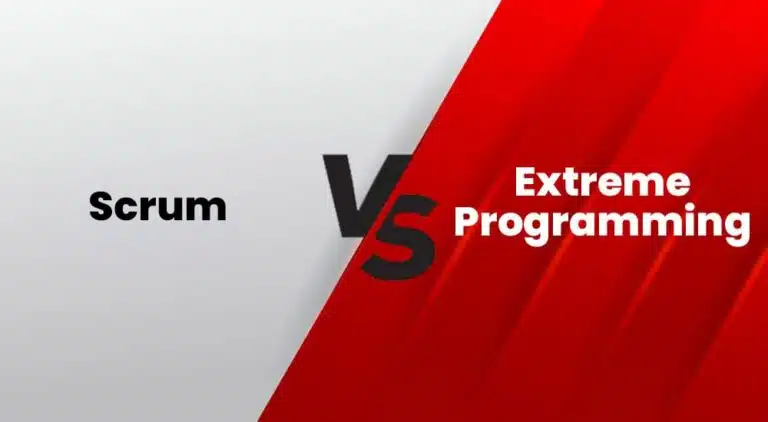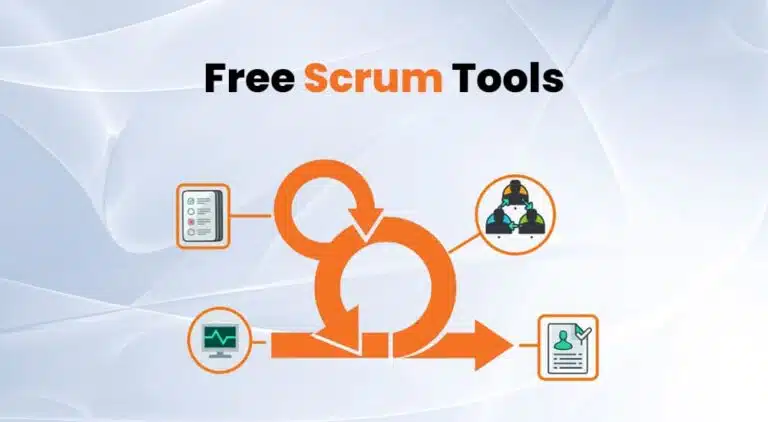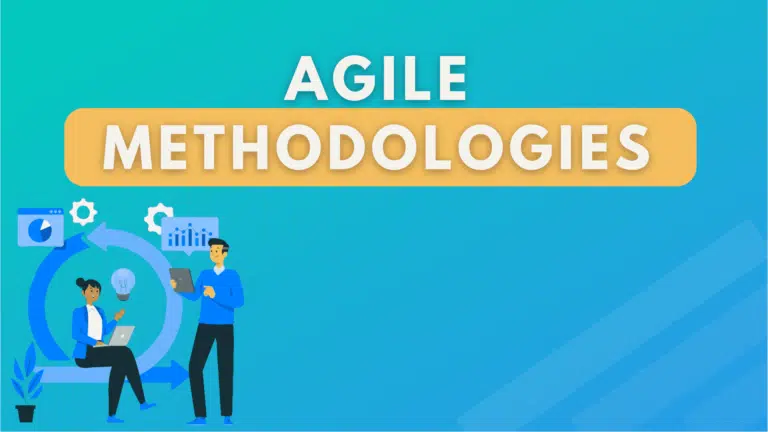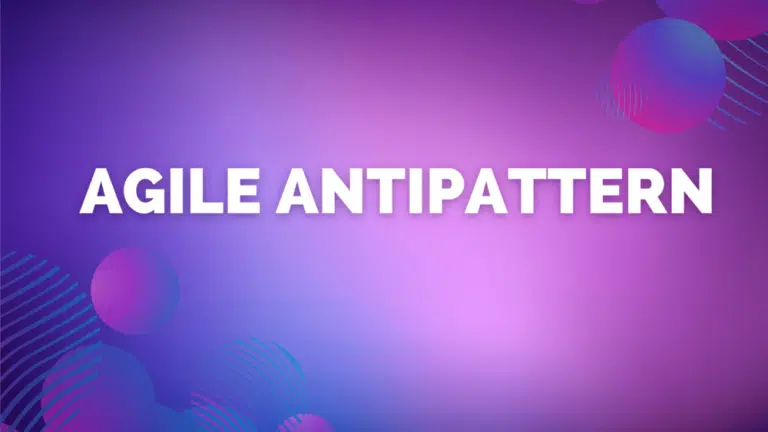Agile methodologies have revolutionized the IT industry; most industries have adopted Agile best practices to manage their projects.
Agile project management methodologies are a collection of frameworks focusing on faster, smaller, and iterative development with constant customer involvement, as opposed to waterfall project management which follows a linear and inflexible development approach.
Agile provides flexibility in its approaches.
Agile methodologies allow software development teams to follow a minimum viable product (MVP) development technique, which helps deploy a product with a minimum set of features to satisfy users as quickly as possible. The MVP strategy collects and analyzes customer feedback to identify whether the team is building the right product.
The feedback helps the Agile teams to refine further, adding new features and developing the product. Customer satisfaction is paramount in an Agile approach.
Agile best practices focus on adopting changing requirements, delivering a working product as soon as possible, then refining it throughout the project life cycle through different sprints with active involvement from the Agile development team and the client.
Agile is a collection of many project management frameworks; therefore, the Best Agile Practices will differ for different frameworks.
(Read: Waterfall Vs Agile Vs Scrum Vs Kanban)
First, we will see the common Agile Best Practices and then best practices for other popular Agile frameworks.
Agile Best Practices
The following are the best Agile practices common to most Agile frameworks:
Define a Clear Product Vision
The first step in any Agile project is to create a clear product vision for your Agile team. The product vision is a high-level description of the product that the team is building. It should be clear, concise, and easy to understand. Ensure all team members understand the project objectives, scope, desired outcomes, and product development process.
Break Down the Project
Break the project into smaller, manageable iterations or sprints. Each iteration should deliver a product. This iterative approach lets the team get feedback, adjust, and deliver value early and frequently. Sprints are short, timeboxed periods (typically 1-4 weeks in duration) during which the team works on specific features or tasks.
Foster Open Communication and Collaboration
Establish a culture of open communication and collaboration between the project team and stakeholders. Encourage regular stand-up meetings, team discussions, and frequent interactions to share progress, address challenges, and promote alignment.
Use Visual Management Techniques
Visualize the project workflow using techniques such as Kanban boards or Scrum boards. These visual tools provide transparency, enable the Agile team to track progress, identify bottlenecks, and facilitate robust communication and decision-making.
You should use burndown charts in your sprints. A daily burndown chart shows the sprint performance. They visually display the completed and the remaining work against time. It explains the project scope to the team and alerts them to possible scope creep. You can also detect risks related to unfinished work.
Start Small and Be Flexible
Don’t try implementing Agile project management on a large, complex project. Start with a small, manageable project. This will help the team learn and adapt to the new methodology.
Agile project management is a flexible methodology. The team should be prepared to adapt the methodology as needed to accommodate changes in requirements or unexpected events.
Conduct Regular Retrospectives
Hold retrospective meetings at the end of each iteration or milestone to reflect on what went well and what could be improved, and take action to address any issues or bottlenecks. Encourage a culture of continuous learning and improvement within the project team.
The Agile development team can keep track of product development with the help of these meetings
Monitor and Measure Project Progress
Establish metrics and key performance indicators (KPIs) to monitor and measure project progress. Regularly review these metrics to identify areas for improvement, track team performance, and make data-driven decisions.
Get Buy-In from All Stakeholders
Getting buy-in from all stakeholders (e.g., customers, project managers, and team members) is essential before implementing Agile project management.
Celebrate Successes
It is important to celebrate success throughout the project. This helps keep the team motivated and engaged.
The above best practices are common for all Agile methodologies.
Now, we will discuss best practices for popular Agile frameworks, including:
- Scrum
- Lean
- Kanban
- Extreme Programming (XP)
- Dynamic Systems Development Method (DSDM)
- Feature-Driven Development (FDD)
- Crystal
(Note: I will not repeat the above practices, as these are common to all Agile mythologies. Instead, I will explain the best practices unique to each methodology.)
#1. Agile Best Practices: Scrum Project Management
Scrum is the most popular Agile framework, and approximately 60% of organizations use Scrum to manage their IT projects.
In Scrum implementation, a Scrum master plays the role of project manager.
Some Agile best practices for Scrum frameworks are as follows:
Create a Product Backlog
The product backlog is a list of all the features or requirements for the product. It is important to prioritize the backlog items so that the team knows what to work on first.
Collaborate with the product owner to ensure that the backlog contains valuable user stories or requirements. Regularly refine it to keep it current.
Empower the Scrum Team
The Scrum team should be self-organizing and empowered enough to make decisions. Encourage team members to take ownership of their tasks and collaborate to find the best solutions.
Timeboxed Sprints
Divide the project into timeboxed iterations called Sprints, typically 1-4 weeks long. The duration should be consistent throughout the project. Timeboxing helps create a sense of urgency and encourages focus and commitment from the team.
Daily Scrum Meetings
Conduct short and focused daily Scrum meetings, also known as Stand-ups. These daily stand-up meetings should be time-boxed to 15 minutes or fewer. Each team member should provide a brief update on their progress, challenges, and plans for the day.
Hold Sprint Reviews
At the end of each sprint, the team holds a sprint review meeting to show the product owner and stakeholders what they have accomplished. The team will get feedback from the product owner and stakeholders on how they can improve the product.
Hold Sprint Retrospectives
At the end of each sprint, the team holds retrospective meetings to discuss how they can improve their process for the next sprint. The team will identify what went well and what they could improve and make improvement plans.
#2. Agile Best Practices: Kanban Project Management
Kanban was developed as a lean manufacturing technology in Japan but is now extensively used in the Agile framework to improve the process flow.
The Kanban process is equally useful in a waterfall approach as well.
The Agile best practices for Kanban frameworks are as follows:
Visualize the Workflow
Create a visual representation of the workflow using a Kanban board. Workflow is a method used to visually track tasks and highlight roadblocks in the product development cycle.
Divide the board into columns representing different stages of work (e.g., “To Do,” “In Progress,” “Done”). Use sticky notes or cards to describe tasks or work items, then move them across the board as they progress.
Limit Work in Progress (WIP)
Limits the number of tasks or work items in each column. This prevents Agile team overload and ensures work is completed before new items are started. Limiting WIP helps focus, reduces context switching, prevents bottlenecks, and improves overall flow.
Continuously Improve
Encourage continuous improvement by regularly reviewing the Kanban system. Collaborate with the team to identify areas where the flow can be optimized, eliminate bottlenecks, and make incremental changes to improve efficiency and effectiveness.
Prioritize Based on Value
Focus on delivering value by prioritizing tasks based on their importance and impact. Collaborate with stakeholders and the team to determine the priority of work items. Ensure that the most valuable tasks are addressed first.
Visualize Dependencies
Identify and visualize dependencies between tasks or work items. This helps the team understand the interdependencies and plan their work accordingly. Visualizing dependencies can also highlight potential risks or bottlenecks early on.
Balance Demand and Capacity
Regularly review and assess the team’s capacity to handle work. Ensure the team is not overwhelmed with too much work or idle because of insufficient tasks. Adjust the work allocation and priorities to maintain a sustainable workflow.
#3. Agile Best Practices: Lean Development Model
Lean project management uses lean manufacturing principles. These principles focus on eliminating waste or anything that does not add value to the process, work, or deliverable.
A few lean best practices are as follows:
Define Value from the Customer’s Perspective
Start by understanding what customers want. Identify their needs, expectations, and desired outcomes. This customer-centric approach ensures that development efforts are focused on delivering meaningful value.
Optimize the Entire Value Stream
Analyze and optimize the development process, including requirements gathering, design, development, testing, deployment, and maintenance. Identify and eliminate bottlenecks, waste, and non-value-added activities at each stage to achieve smoother workflows and faster delivery.
Eliminate Waste
Waste is anything that does not add value to the customer. This includes rework, defects, and unnecessary meetings. Lean development teams identify and eliminate waste to improve efficiency and productivity.
Emphasize Continuous Improvement
Encourage a culture of continuous learning and improvement. Regularly reflect on development practices, seek feedback from customers and stakeholders, and leverage metrics and data to identify areas for improvement. Foster an environment where experimentation, innovation, and learning from failures are valued.
Apply Visual Management Techniques
Visualize the workflow and progress using tools like Kanban boards or task boards. This provides transparency, helps identify bottlenecks, and facilitates better coordination within the Agile team. Visual management also enhances communication and promotes a shared understanding of work status.
Practice Just-in-Time Development
Avoid overproduction of features or functionality that is not immediately required. Focus on delivering what is needed at the present moment. This approach minimizes wasted effort and ensures optimal use of development resources.
Foster a Quality Culture
Quality should be built into every stage of the development process. Encourage developers to take ownership of their work quality and implement practices (e.g., test-driven development, code reviews, and automated testing). Prioritize bug prevention over bug fixing and strive to deliver high-quality software continuously.
Defer Critical Decisions
Lean development teams make decisions as late as possible in the development process. This allows them to gather more information and make better decisions.
Leverage Automation and Tooling
Utilize automation and tooling to streamline and speed up development processes. Automation can include tasks like build and deployment processes, testing, code analysis, and monitoring. By reducing manual effort, developers can focus on high-value activities and improve productivity.
The Lean development model is about embracing a mindset of continuous improvement, waste reduction, and value delivery. By following these best practices, teams can enhance efficiency, deliver software faster, and adapt effectively to changing customer needs.
#4. Agile Best Practices: Extreme Programming (XP)
Extreme Programming (XP) is an Agile software development methodology emphasizing close collaboration between developers and customers, iterative development, test-driven development, continuous feedback, and a flexible approach to change.
XP is based on the following values:
- Communication
- Simplicity
- Feedback
- Respect
- Courage
Some key best practices of Extreme Programming are as follows:
Pair Programming
Two programmers work together on the same code, one typing (the driver) and the other reviewing and providing real-time feedback (the navigator). This practice improves code quality, prevents errors, and shares knowledge within the team.
Test-Driven Development (TDD)
Write automated tests before implementing the code. This approach will ensure that the code meets the desired requirements and maintains the desired behavior during subsequent changes.
Continuous Integration (CI)
In CI, developers frequently integrate their changes into a shared repository, which triggers an automated build-and-test process. This practice detects integration issues early and maintains a stable codebase.
Small Releases
Deliver software in small increments with complete functionality, allowing for faster feedback and early value delivery to customers. It reduces the risks associated with large releases and facilitates adapting to changing requirements.
Continuous Refactoring
Refactoring eliminates technical debt, reduces defects, and improves the system’s quality. This makes it easier to change in the future. It continuously improves the code’s design and maintainability without changing its external behavior.
Collective Ownership
The entire Agile development team takes collective responsibility for the codebase. Any developer can modify any part of the code, fostering collaboration, knowledge sharing, and preventing bottlenecks or dependencies.
Onsite Customers
Have a dedicated customer representative who works closely with the development team, providing real-time feedback, clarifying requirements, and ensuring that the software meets the customer’s needs.
Simple Design
Focus on the simplest design that meets the immediate requirements while being flexible enough to accommodate future changes. Avoid over-engineering or adding unnecessary complexity.
40-Hour Workweek
XP teams work 40 hours per week. This prevents burnout and ensures that the team maintains a high productivity level.
Collaborative Planning
Collaboratively plan development iterations or sprints by estimating the effort required for each user story. Involve developers and customers in prioritizing and defining the scope for each iteration.
#5. Dynamic Systems Development Method (DSDM)
Dynamic Systems Development Method (DSDM) is an Agile methodology for software development projects that build the product iteratively and incrementally. It emphasizes active user involvement, frequent delivery, and alignment with business goals.
Some DSDM best practices are as follows:
MoSCoW Prioritization
Use the MoSCoW technique to prioritize requirements. It categorizes requirements as Must-haves, Should-haves, Could-haves, and Won’t-haves. This prioritization helps you deliver the most critical and valuable requirements first, enabling the team to focus on high-priority items.
Timeboxing
Timeboxing is a key practice in DSDM. Timeboxing involves defining fixed-length timeboxes or iterations for development activities. These timeboxes provide a predictable cadence and create a sense of urgency. Be sure to stick to the timeboxes and deliver incremental value at the end of each iteration.
Prototyping and Modeling
This Agile framework uses prototyping and modeling techniques to gain a shared understanding of requirements and design. It helps visualize concepts and features through mockups, wireframes, or prototypes. This facilitates early feedback, reduces misunderstandings, and helps align the team and stakeholders.
Focus on Business Value
DSDM places a strong emphasis on delivering business value. It continuously assesses the value of features and prioritizes work accordingly. Regularly review and refine the business case to ensure that the project remains aligned with strategic objectives and delivers the expected return on investment.
Proactive Risk Management
DSDM projects use proactive risk management to identify and mitigate risks early. This helps reduce the likelihood of project delays or failures.
#6. Feature-Driven Development (FDD)
Feature-Driven Development (FDD) is an Agile methodology that focuses on delivering software features in incremental iterations. It emphasizes domain modeling, feature-driven design, regular inspection, and adaptation.
Some FDD best practices are as follows:
Domain Modeling
It emphasizes domain modeling as a key practice in FDD. You must understand the domain and the problem before starting development. Create a shared understanding of the domain through domain models, class diagrams, or other modeling techniques. This helps you identify key features and their relationships.
Feature-Driven Design
This methodology design features incrementally and iteratively. You can start with an overall architectural design, then focus on designing and implementing individual features. Encourage the development team to collaborate closely with architects and designers to ensure that features are designed effectively and meet the required quality standards.
Model-Driven Design
FDD projects use models to represent the software architecture, design, and implementation. Models make communication with stakeholders easy, allow tracking progress, and help identify and resolve problems.
Feature Decomposition
You must break down features into smaller, manageable tasks. Decompose features into workable components and define clear acceptance criteria for each task. This facilitates better estimation, tracking, and progress monitoring. Ensure the decomposition is based on a solid understanding of the feature’s requirements and dependencies.
Regular Inspections
Conduct regular inspections to review progress, identify issues, and ensure adherence to coding standards and quality guidelines. Schedule inspections at predetermined intervals or milestones to validate that the implemented features meet the desired quality and functionality.
Feature Ownership
FDD framework assigns feature ownership to developers. It encourages them to take responsibility for the end-to-end delivery of their assigned features (e.g., design, implementation, testing, and deployment). Feature owners act as champions for their features to ensure their successful completion.
#7. Crystal
Crystal methodologies, developed by Alistair Cockburn, are a family of lightweight and adaptable approaches to software development. Crystal methodologies prioritize communication, teamwork, and simplicity. Here are some best practices for implementing Crystal methodologies effectively:
Team Collaboration
Crystal methodology fosters a collaborative and cohesive team environment. It encourages open communication, trust, and shared responsibility among team members. Facilitate regular face-to-face interactions and encourage team members to engage in discussions and decision-making processes actively.
Reflective Improvement
It emphasizes continuous learning and improvement. Regularly reflect on the development process and project outcomes. Crystal Agile framework encourages the team to identify areas for improvement, share lessons learned, and adapt their practices accordingly. Leverage retrospectives or post-iteration reviews to gather feedback and apply improvements in subsequent iterations.
Focuses on People and Interactions
It recognizes the importance of people and their interactions in successful software development. You should prioritize effective communication and collaboration within the team and with stakeholders. Encourage individuals to understand and empathize with others’ perspectives, fostering a positive and inclusive team culture.
Simplicity and Minimalism
This framework emphasizes simplicity in designs, coding, and processes. Avoid overcomplicating solutions. Strive for clarity and readability in code, maintain a minimalist approach to software architecture, and keep processes lightweight and adaptable.
Personal Skill Development
This framework encourages personal skill development and expertise within the team; it supports team members as they acquire new skills, share knowledge, and grow professionally. Be sure to provide opportunities for cross-training and allow individuals to take ownership of their professional growth.
Reflective Documentation
It recognizes the importance of documentation but focuses on the essentials. You must document key decisions, important domain concepts, and other relevant information. Keep documentation lightweight, concise, and up-to-date. Leverage tools and practices that support collaborative documentation and knowledge sharing.
Summary
Agile has many frameworks. Best practices for all Agile frameworks allow for optimal use. Select an Agile framework and follow best practices to complete your project successfully.

I am Mohammad Fahad Usmani, B.E. PMP, PMI-RMP. I have been blogging on project management topics since 2011. To date, thousands of professionals have passed the PMP exam using my resources.

